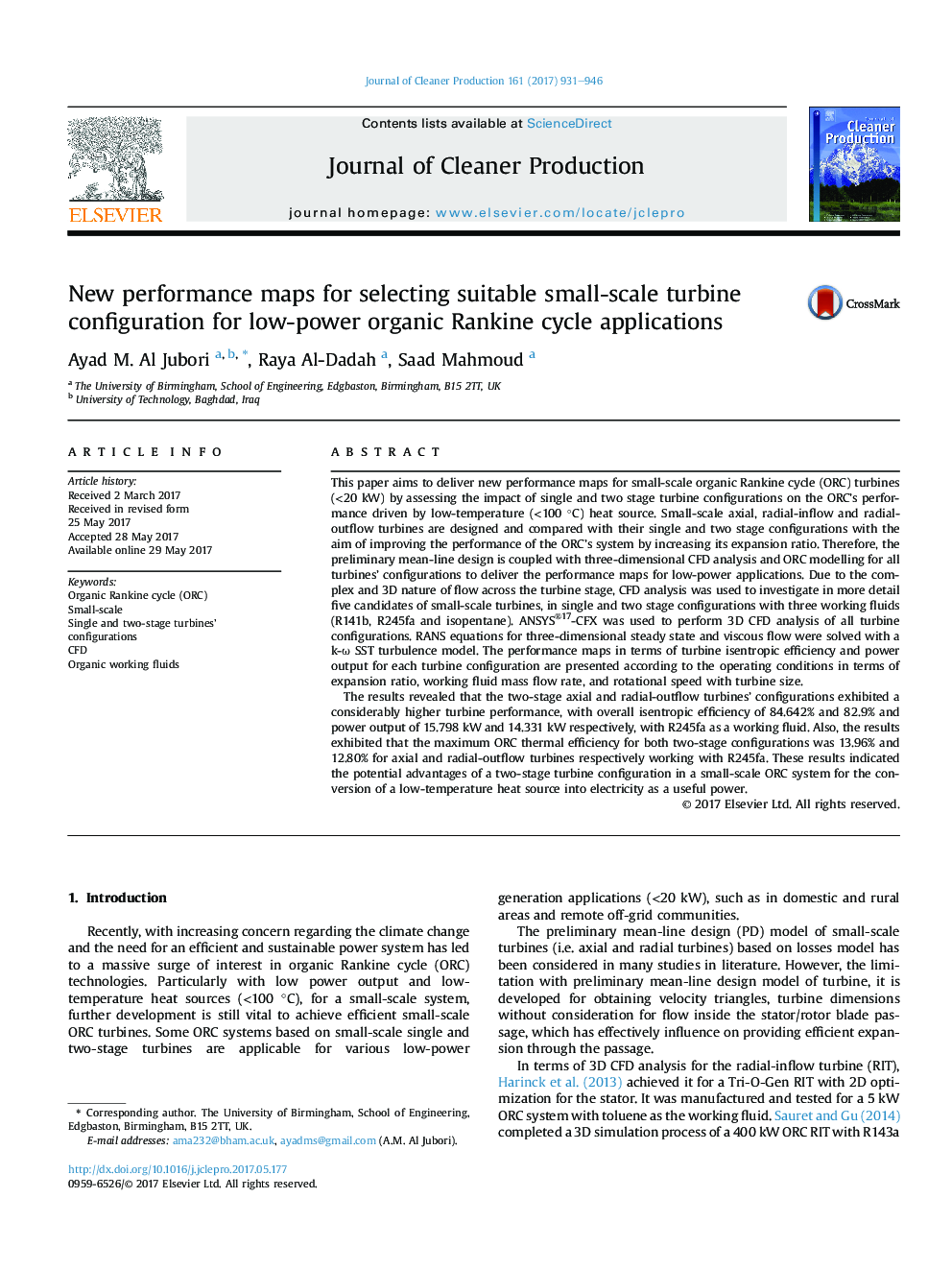| کد مقاله | کد نشریه | سال انتشار | مقاله انگلیسی | نسخه تمام متن |
|---|---|---|---|---|
| 5480893 | 1522093 | 2017 | 16 صفحه PDF | دانلود رایگان |
- New performance maps for organic Rankine cycle turbines have been presented.
- Axial, radial-inflow and outflow turbines in single and dual stage are considered.
- Design methodology of axial, radial-inflow and outflow turbines is shown.
- High actual ORC thermal efficiency (around 75% of the ideal Carnot Cycle).
- Higher turbine and thermal system efficiencies achieved with two-stage configuration.
This paper aims to deliver new performance maps for small-scale organic Rankine cycle (ORC) turbines (<20 kW) by assessing the impact of single and two stage turbine configurations on the ORC's performance driven by low-temperature (<100 °C) heat source. Small-scale axial, radial-inflow and radial-outflow turbines are designed and compared with their single and two stage configurations with the aim of improving the performance of the ORC's system by increasing its expansion ratio. Therefore, the preliminary mean-line design is coupled with three-dimensional CFD analysis and ORC modelling for all turbines' configurations to deliver the performance maps for low-power applications. Due to the complex and 3D nature of flow across the turbine stage, CFD analysis was used to investigate in more detail five candidates of small-scale turbines, in single and two stage configurations with three working fluids (R141b, R245fa and isopentane). ANSYS®17-CFX was used to perform 3D CFD analysis of all turbine configurations. RANS equations for three-dimensional steady state and viscous flow were solved with a k-Ï SST turbulence model. The performance maps in terms of turbine isentropic efficiency and power output for each turbine configuration are presented according to the operating conditions in terms of expansion ratio, working fluid mass flow rate, and rotational speed with turbine size.The results revealed that the two-stage axial and radial-outflow turbines' configurations exhibited a considerably higher turbine performance, with overall isentropic efficiency of 84.642% and 82.9% and power output of 15.798 kW and 14.331 kW respectively, with R245fa as a working fluid. Also, the results exhibited that the maximum ORC thermal efficiency for both two-stage configurations was 13.96% and 12.80% for axial and radial-outflow turbines respectively working with R245fa. These results indicated the potential advantages of a two-stage turbine configuration in a small-scale ORC system for the conversion of a low-temperature heat source into electricity as a useful power.
Journal: Journal of Cleaner Production - Volume 161, 10 September 2017, Pages 931-946
